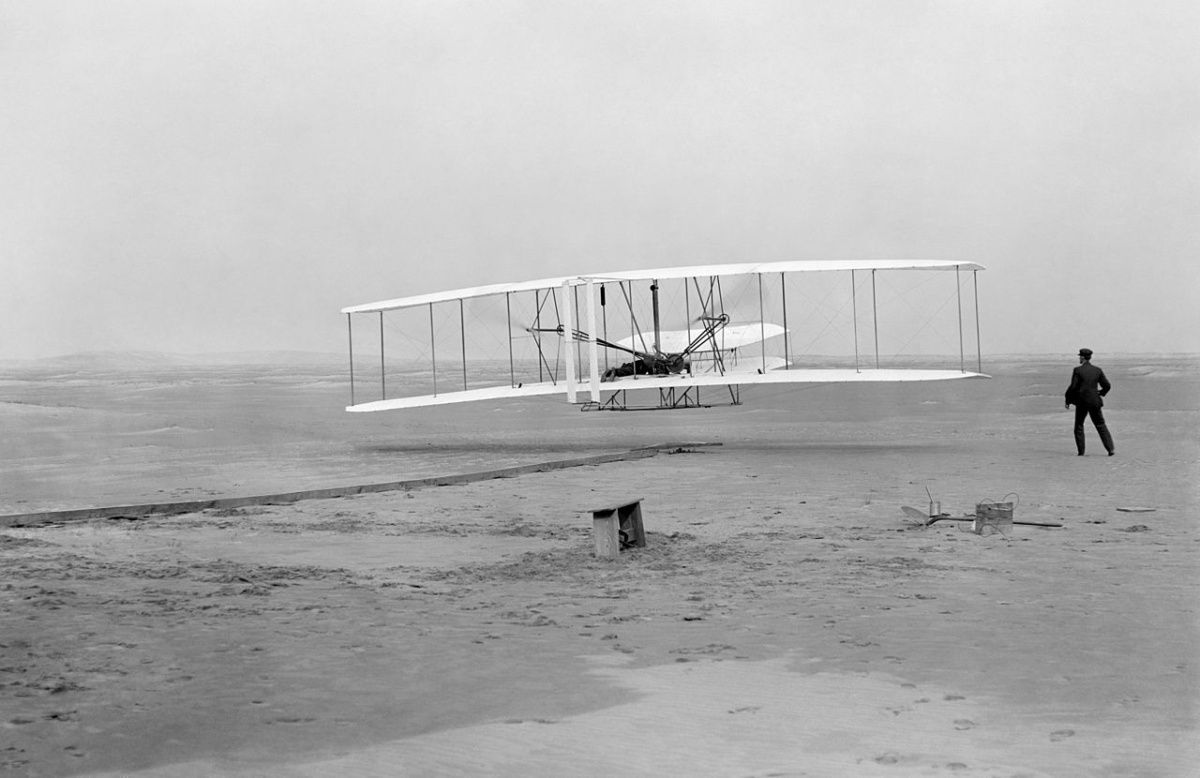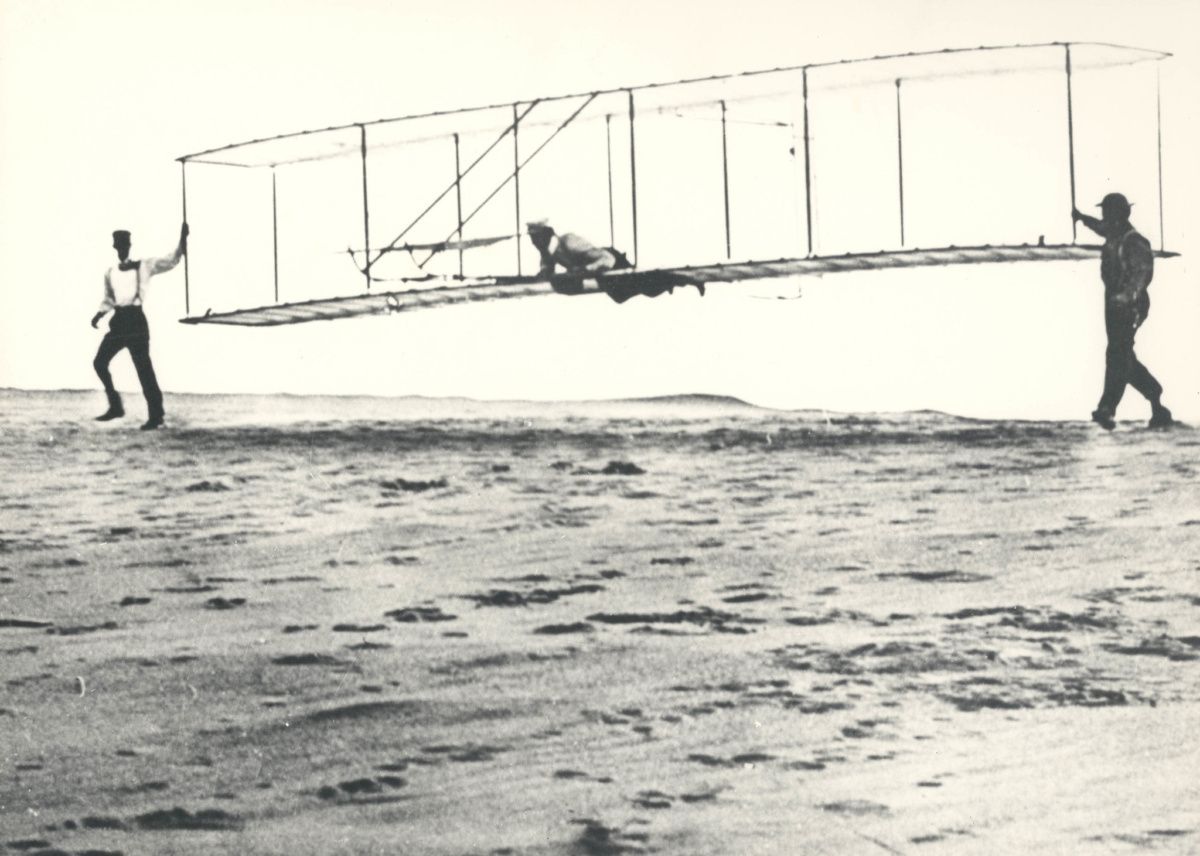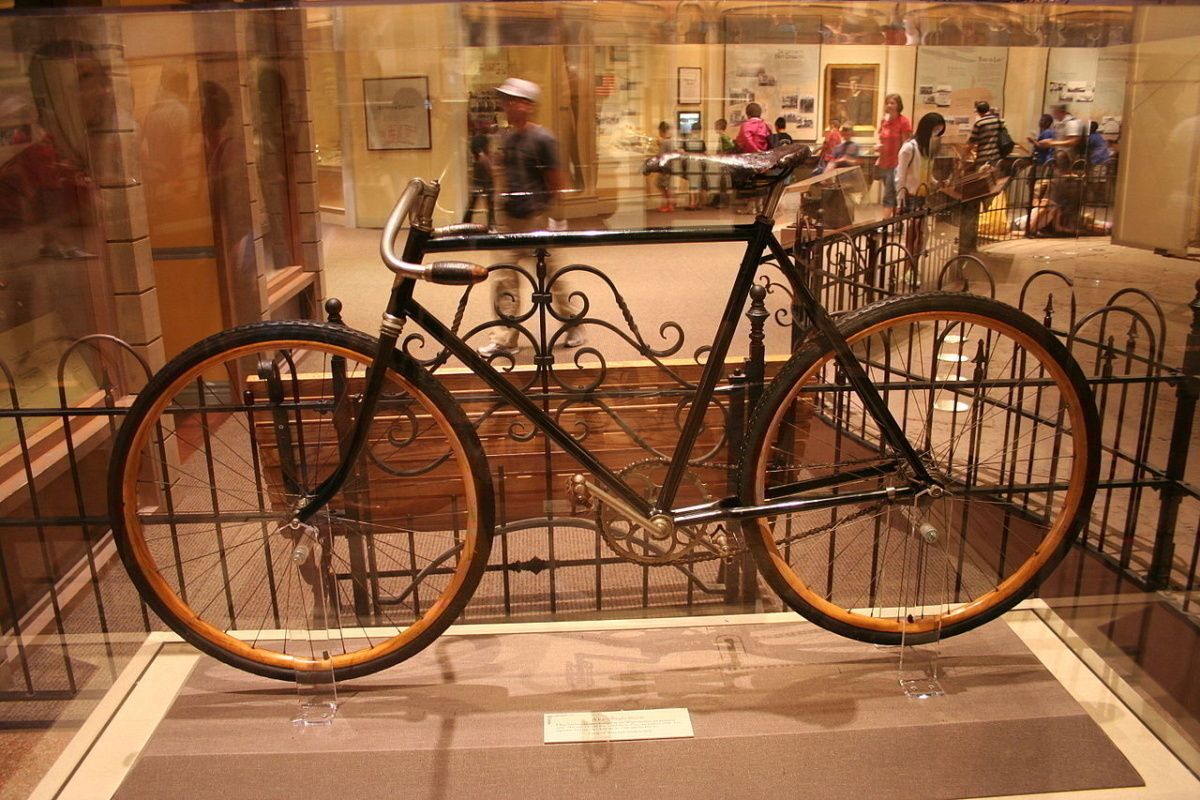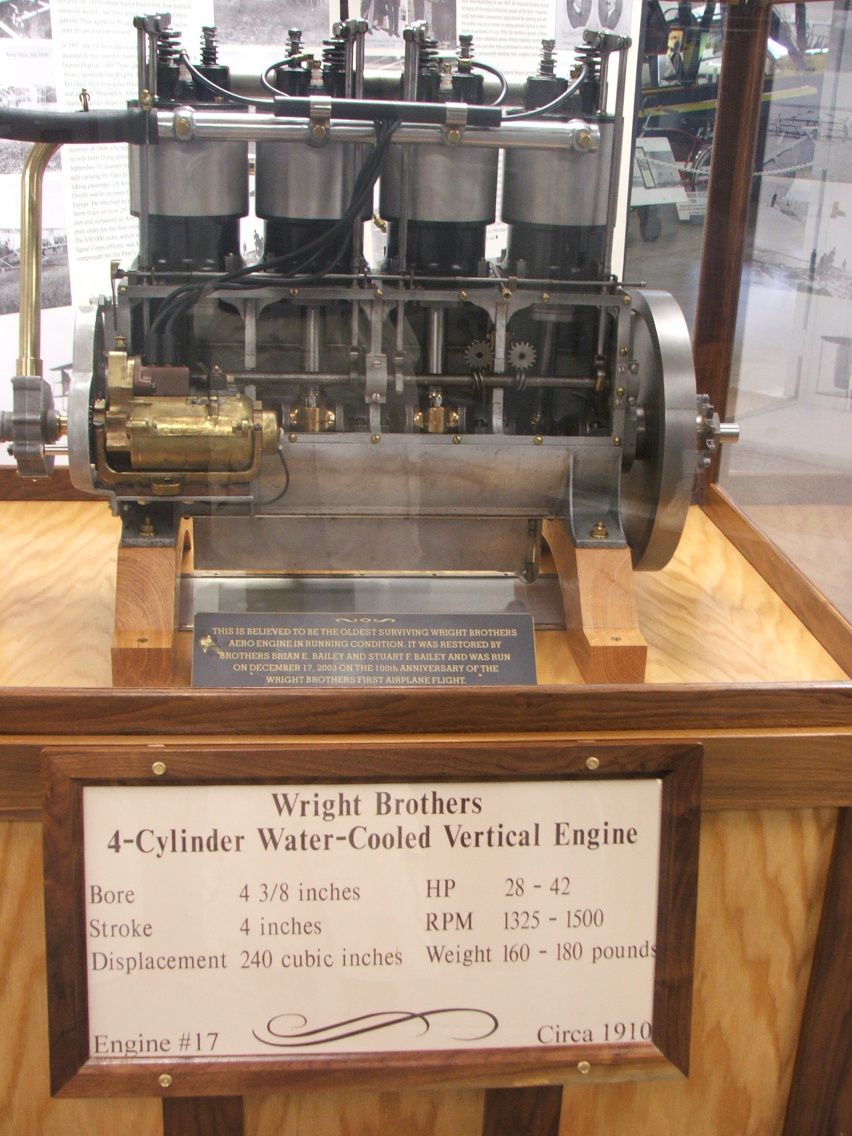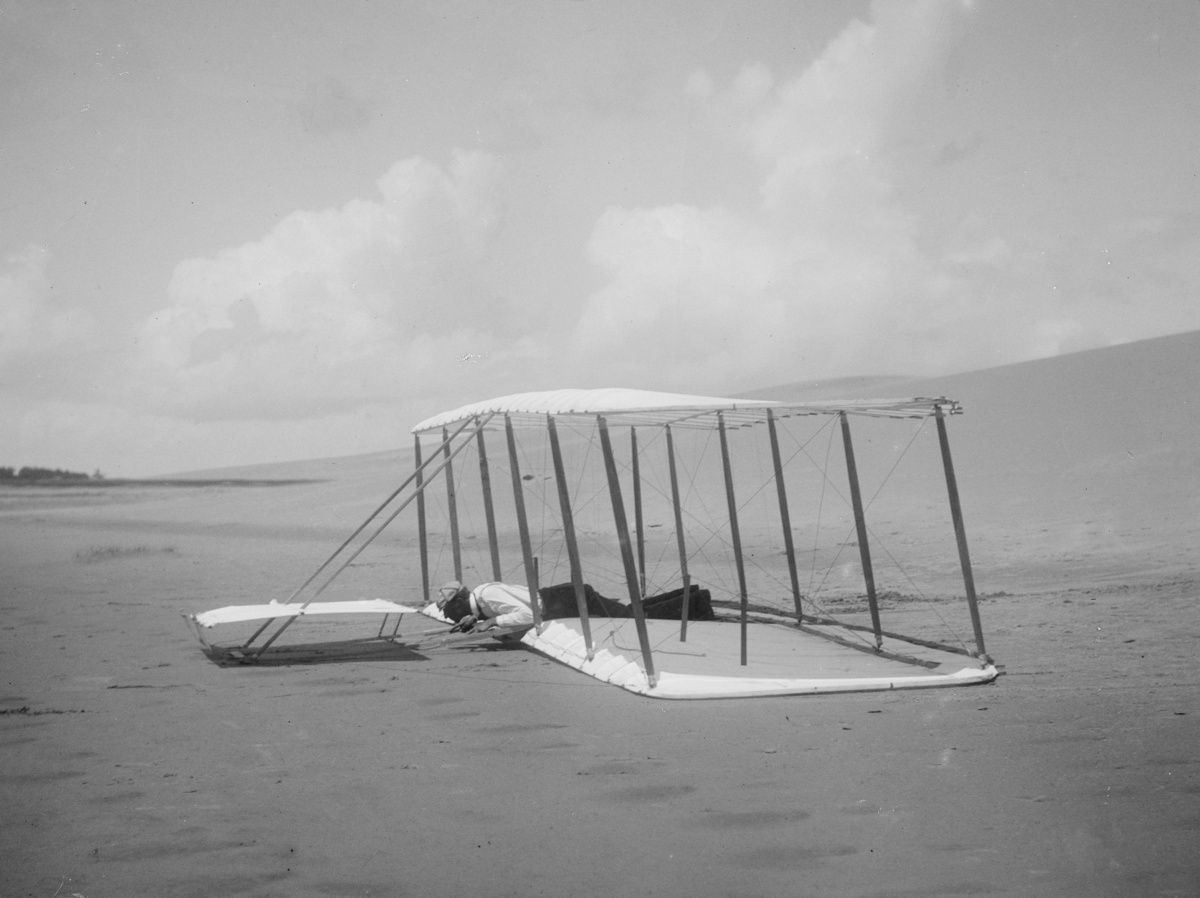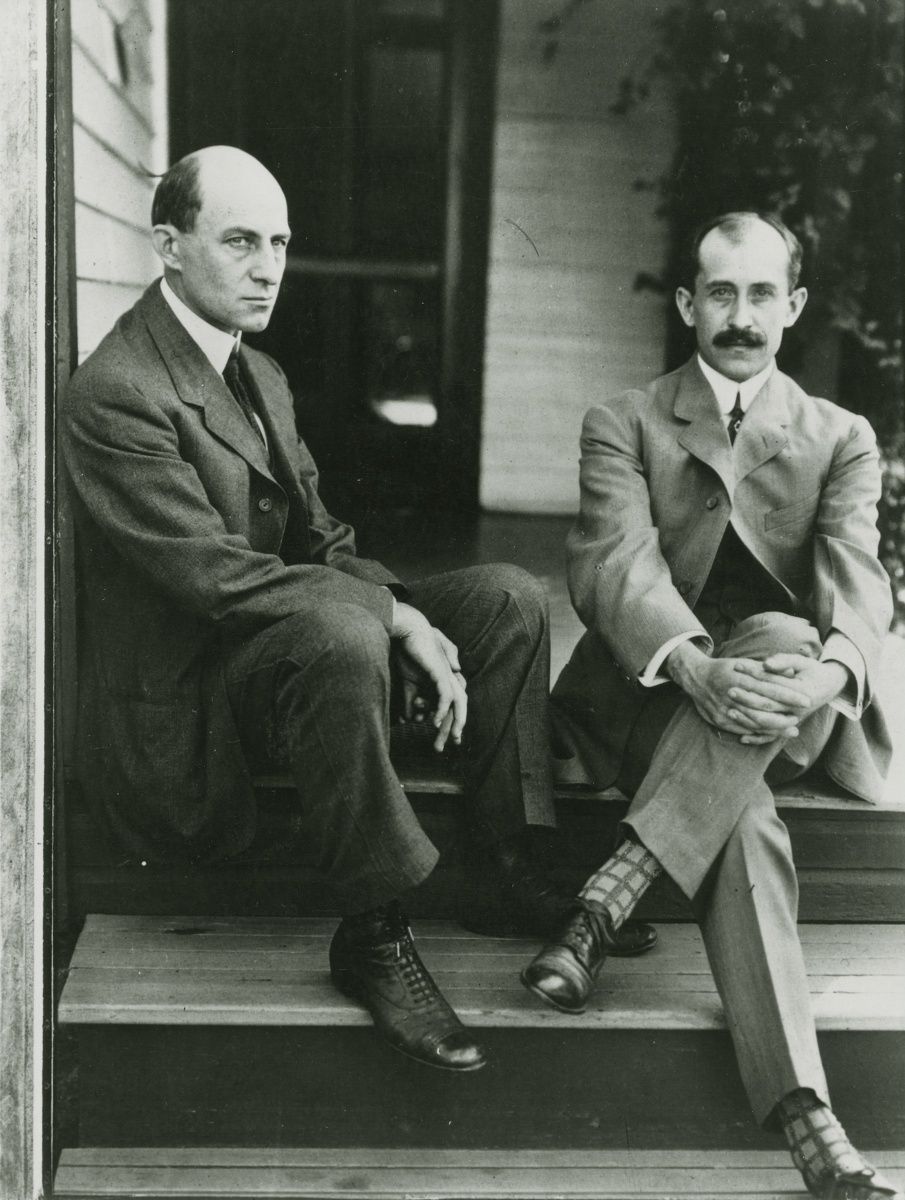Famous for being the world's first heavier-than-air, powered aircraft to fly successfully, the Wright Flyer or Flyer 1 was the invention of Wilbur and Orville Wright. Before we take a look at how the Wright Flyer came about, we must first understand what made the two brothers decide to build an airplane.
Able to trace their family tree back to Englishman Samuel Wright, who sailed to Massachusetts in 1636, the Wright brothers were two of seven children born to Milton Wright and Susan Catherine Koerner. Milton was a pastor in the Church of the United Brethren in Christ and moved around the country before being made a Bishop and settling down in Dayton, Ohio.
A toy helicopter got the brothers interested in flying
Neither Wilbor nor Orville had middle names. Instead, their father preferred to give them influential first names after clergymen that he admired. To their friends, they were just "Will and Orv" and to others "The Bishops boys."
The Wright brother's first encounter with flying machines happened in 1878 while they were living in Cedar Rapids, Iowa. One day their father brought home a toy helicopter based on a model built by French aviation pioneer Alphonse Pénaud. Constructed of bamboo, paper, cork, and a rubber band to power the rotor, the two boys played with the helicopter until it broke and then built their version or the toy.
In their later years, the pair pointed to the toy helicopter as the spark for their flying interest. Alphonse Pénaud continued his dream of building an aircraft that was large enough for a man to fly in and may well have beaten the Wright brothers to the invention. However, he committed suicide after failing to find backers for his project.
The pair started building bicycles
Interestingly, neither of the brothers finished high-school, preferring to drop out an set up a printing business. Spurred by the nation's craze with bicycles, the pair opened a bicycle sales and repair shop in 1892 and then started to produce their bikes four years later. This successful endeavor now enabled them to further their interest in flying.
The pair became obsessed with the idea of man being able to fly. Therefore, they studied every paper written on the subject going as far back as Italian genius Leonardo da Vinci.
Once they had built what they thought was an airworthy glider, the brothers chose the beach at Kitty Hawk, North Carolina, thinking that the constant sea breeze would help create lift. In total, they conducted more than 700 successful glider flights before turning their attention to powered flight. In 1902 no automobile manufacturer could build an engine that was powerful enough while also being light enough to meet the Wright brother's requirements. The pair now had no option but to develop an engine of their own.
The brothers built their own engine
The Wright brothers built an inline, four-cylinder water-cooled engine capable of producing 12 horsepower with the help of coworker Charlie Taylor. What was unique about the engine was that it was the first to have an aluminum crankcase to reduce weight.
The Wright Flyer was built using a biplane canard wing design construction. Canard is the aeronautical term, describing a small forward wing placed forward of the main wing on fixed-wing aircraft. The name canard derived from the Santos-Dumont 14-bis aircraft that was said to look like a flying duck. Canard is, of course, the French word for duck. Two small stabilizers at the front of the plane controlled the pitch on the Wright Flyer. This set up was used rather than having it on the tail as is used by aircraft today. The rudder was at the rear of the plane just as it is on modern airplanes.
The Flyer was made of wood and fabric
To create thrust, the brothers constructed two wooden propellers. These measured at 8ft 6in and were placed ten feet apart between the wings. The propellors were linked to the engine using a sprocket and chain system similar to a bicycle. After mounting the gravity-fed petrol engine to the right of the pilot's cradle, they had to expand the wingspan by four inches, making it 40 feet, 4 inches in length.
The Wright Flyers frame was made from ash and spruce, two lightweight but durable types of wood. The aerodynamic covering for the wings was a pure, untreated muslin fabric.
The conditions for the first flight were near perfect
The requirements for the first flight on December 17, 1903, were near perfect with a strong headwind with gusts up to 27 miles per hour.
At around 10:30 that morning, Orville Wright lay down on the plane's wing and powered the engine into life. Using a system of rails that stretched for 60 feet, the plane took off and flew for 12 seconds at an altitude of eight feet and an airspeed of 6.8 mph. With no landing gear or skids, the Wright Flyer was designed to land on soft sand, which is another reason why the Outer Banks was chosen for the flight.
Aircraft Specifications
- Length- 21 ft, 1in.
- Wingspan- 40 ft, 4 in.
- Height- 9 ft, 4 in.
- Empty weight- 605 lbs.
- Engine- inline four cylinders, water-cooled, 170 lbs., 12 hp.
- Propellers- two, 8 ft, 6 in.
- Maximum speed- 30 mph (estimate).
- Service ceiling- 30 ft (estimate).
It only flew for one day
The following two flights of the day covered a slightly longer distance of 175 and 200 feet, and while that may sound unimpressive today, it made the Wright brothers famous for being the first to fly a powered aircraft. Something the State of North Carolina now uses as a slogan on its license plates, which read, "First in Flight."
Sadly, after just one day of test flights, the Wright Flyer never flew again. As it was being carried back to the rail launch site for a fourth flight, a powerful gust of wind caught it and flipped it over several times. This happened despite everyone's best attempt at holding onto the 605-pound aircraft. The broken aircraft was shipped home to Dayton and later restored by Orville and is now on display at the Smithsonian Museum in Washington, D.C.
What are your thoughts on the Wright Flyer? Let us know what you think in the comment section.

